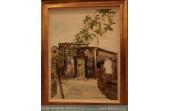Three Lanes And Seven Alleys
- Things to do
-
- Photo(10)
- Tips&article(2)
- Make it Happen
- Map
-
loading...
Special Attractions
 Ordos Grassland
Ordos Grassland
|
 Nanxi Hot Spring In Ninghai
Nanxi Hot Spring In Ninghai
|
 Putuo Cliff
Putuo Cliff
|
 Tomb Of Yu Ji
Tomb Of Yu Ji
|
 Daqing
Daqing
|
 Mohe
Mohe
|
 Jihua Ski Resort
Jihua Ski Resort
|
 Zhaoling Tomb
Zhaoling Tomb
|
Overview
The Three Lanes and Seven Alleys is a general name for the ten lanes and alleys on Nanhou street from north to south. The Three Lanes include Yimian lane, Wenru lane and Guanglu lane, and the Seven Alleys include Yangqiao alley, Langguan alley, Anmin alley, Yellow alley, Tower alley, Palace alley and Jipi alley. The total area of the ten lanes covers 40 hector, with 268 ancient civilian residences.
The Three Lanes and Seven Alleys was built at Luo city, an ancient
city in Tang Dynasty. At that time, Antai river served as the south
border of Luo city, the political center and the noble residence
were in the north, while the commercial center and civilian
residence were in the south. The ancient people like to built their
city symmetrically, so they built the city wall as the axes to
separate the two parts of the city. In the south, the civilians
built lanes as their residence.
Here you can see criss-crossed lanes paved with flagstone. You can
also see the delicate tiled houses with white walls, and in most of
the houses, there are pavilions, gardens, fake mountains, flowers
and grasses. The doors, windows, steps, doorcases, flower-pot
pastorals and columns are all decorated with beautiful sculpture,
showing the civilian art of Fuzhou in the ancient times, therefore
the block is honored as the Museum of Ancient Architecture.
The Three Lanes and Seven Alleys is also a birthplace of many
famous politicians, militants, litterateurs and poets. You can see
the glorious past just from the name of some of its lanes.
Feature
Today the city still keeps part of lanes and alleys of Tang and Song Dynasty. They have become one of the important symbols of the ancient city, the most famous is the block called Three Lanes and Seven Alleys.
lacation
Beside 817 road at the center of Fuzhou city.
Traffic
you can go there by bus to South station or Daoshan station. The lanes are not eye-catching, you may find them at Jipi lane or on the west side of Daoshan road. The must-see lanes are Nanhou street and palace lane.
From the train station or the north station, you can go there by bus No. 5, 18, 22 or 55 to Shuangpaoqiao station.
From the south station, you can go by bus No. K1, 8 or 801 to South
street.
From the west station, you can go by bus No. 5 to Shuangpaoqiao
station.
Tips & articles
|
|



